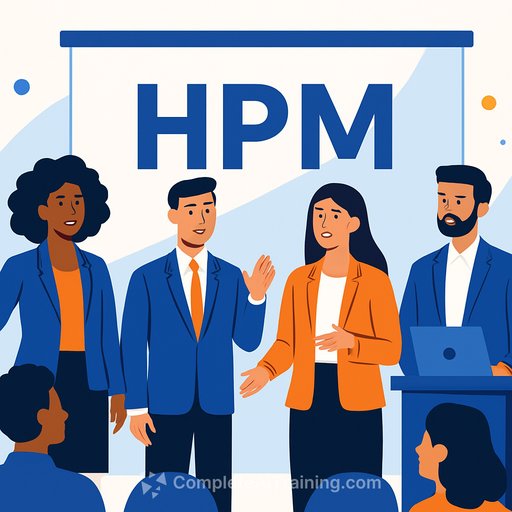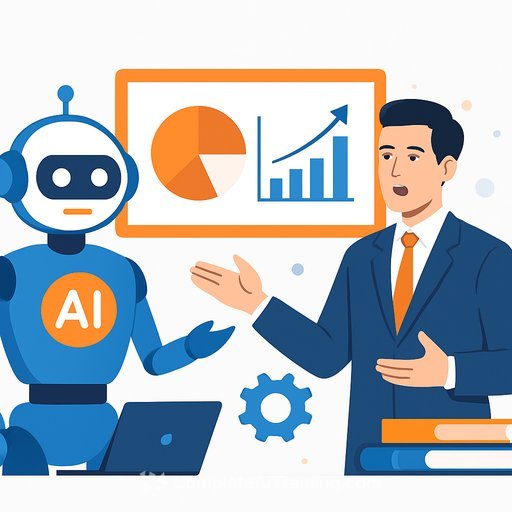AI Bias Is Slipping Past HR Teams - Here's How to Catch It and Fix It
AI can be a time saver in hiring, but it also comes with a problem that's easy to miss: people tend to trust its recommendations, even when those recommendations are biased. A recent University of Washington study found that recruiters followed AI advice that favored one race over another, often without questioning it-even when they noticed the bias.
Neutral AI produced balanced selections. Biased AI pulled people in its direction. Only when the bias was extreme did participants resist a little-and they still went with the AI about 90% of the time.
Why this matters for HR
Applicant volume is up. AI makes it easier to apply for more roles, and recruiters lean on tools to keep up. That pressure can push teams to over-trust automation, which opens the door to discriminatory outcomes and legal exposure.
The takeaway: keep AI in your stack, but tighten how it's used. Build guardrails that make bias visible, measurable, and correctable.
Quick diagnostic: are you at risk?
- Your AI tool can reject candidates without a human review.
- Recruiters see AI scores before forming their own judgment.
- You don't track selection rates by race, gender, or disability through each stage.
- There's no documented audit of your hiring models or vendors.
- Interview decisions lack structured scoring tied to job-relevant criteria.
The HR playbook: practical steps that work
1) Redesign decision flow to reduce anchoring
- Two-pass review: recruiters rate candidates first on structured criteria, then view the AI recommendation.
- Require a short written rationale when a recruiter follows AI advice-make the thinking visible.
- Disable automated rejections. AI can prioritize, but a human closes the loop.
- Blind early screens: hide names, photos, and other demographic signals where possible.
2) Lock in job-relevant, measurable criteria
- Define must-have competencies and evidence for each. Remove vague proxies like "culture fit."
- Use structured scoring rubrics for resume screens and interviews. Calibrate with sample profiles.
- Require diverse slates for interviews to counter algorithmic skew.
3) Audit your tools before and after launch
- Run an "A/B flip test": alter demographic cues (or remove them) and check if recommendations change.
- Measure adverse impact at each stage. If any group's selection rate is below ~80% of the top group, investigate immediately.
- Log every AI recommendation and final decision for traceability.
- Set fairness thresholds in vendor SLAs; require regular bias reports and model updates.
4) Train the team to resist over-trust
- Start screens with a 60-second bias check: a quick reminder or micro-exercise reduced biased choices by 13% in the study.
- Teach "disagree and commit later": critique the AI first, decide second.
- Coach recruiters to spot proxy variables (school, location, gaps) that can mask bias.
5) Configure the tech to expose uncertainty
- Show confidence ranges, not single scores. Force the question: "Is this signal strong enough?"
- Cap the influence of AI on final rankings (e.g., AI can shift a score by no more than one band).
- Use explainability features so recruiters see which criteria drove a recommendation-then validate those inputs.
6) Monitor continuously, with teeth
- Weekly review of funnel metrics by demographic group; monthly deep dives with HR, Legal, and Ops.
- Trigger an automatic audit when thresholds are breached, and pause the model if needed.
- Publish a short internal fairness report so leaders stay accountable.
Vendor and compliance essentials
- Demand documentation on training data, evaluation sets, bias tests, and change logs.
- Get clear on how candidate data is collected, stored, and used. Privacy and consent aren't optional.
- Align to recognized frameworks and guidance: NIST AI Risk Management Framework and EEOC guidance on AI and adverse impact.
What to do this week
- Turn off automated rejections. Require human review for every "no."
- Introduce the two-pass review and a 3-5 point structured rubric for screens.
- Run a quick flip test on your current AI tool; document the results.
- Set up a simple dashboard tracking selection rates by stage and group.
- Schedule a 30-minute bias refresher before your next hiring cycle.
AI can help you process volume without burning out your team. It just needs guardrails that make bias visible and give people the space-and the responsibility-to challenge its advice.
If your team needs practical training on safe, effective AI use in hiring workflows, explore focused courses at Complete AI Training.
For context on the research discussed here, see the University of Washington's summary of AI bias influencing recruiter decisions on its news site.
Your membership also unlocks:






